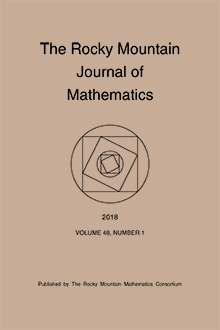Abstract
Although the Bruhat order on a Weyl group is closely related to the singularities of the Schubert varieties for the corresponding Kac–Moody group, it can be difficult to use this information to prove general theorems. This paper uses the action of the affine Weyl group of type on a Euclidean space to study the Bruhat order on . We believe that these methods can be used to study the Bruhat order on arbitrary affine Weyl groups. Our motivation for this study was to extend the lookup conjecture of Boe and Graham (which is a conjectural simplification of the Carrell–Peterson criterion for rational smoothness) to type . Computational evidence suggests that the only Schubert varieties in type where the “nontrivial” case of the lookup conjecture occurs are the spiral Schubert varieties, and as a step towards the lookup conjecture, we prove it for a spiral Schubert variety of type . The proof uses descriptions we obtain of the elements and of the rationally smooth locus of in terms of the -action on . As a consequence we describe the maximal nonrationally smooth points of . The results of this paper are used in a sequel to describe the smooth locus of , which is different from the rationally smooth locus.
Citation
William Graham. Wenjing Li. "The Bruhat order, the lookup conjecture and spiral Schubert Varieties of type $Ã_2$." Rocky Mountain J. Math. 51 (1) 149 - 192, February 2021. https://doi.org/10.1216/rmj.2021.51.149
Information





